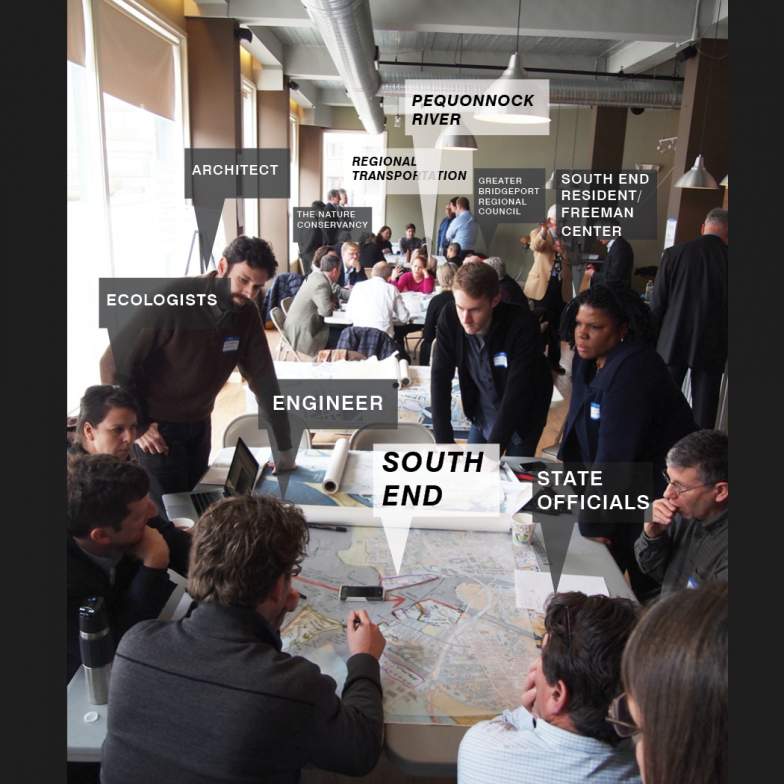Re:ground’s work
The work re:ground currently pursues includes:

- Interdisciplinary translation and coordination – Let’s face it: different disciplines speak different languages, and work in different ways. Managing this can be a challenge. During my 20+ years of experience in architecture and planning, 4 in international development, and 14 years in sustainability and resilience, I’ve become adept at helping navigate differences between professions and disciplines, including architecture and planning, landscape architecture, civil and structural engineering, environmental engineering, ecology, humanitarian response, long-term development, etc.
- Community engagement – I dislike this term. Really. There is no such thing as one monolithic ‘community’, and engagement seems more a passive act than proactively involving people deeply in climate adaptation and community resilience through the integration of natural systems and built environments. My experience in architecture and planning has included much work with communities and grassroots organizations, from the Martin Luther King Corridor Master Plan in North Carolina; to senior centers for 5 underserved communities in Chicago; to post-earthquake recovery and redevelopment in highly dense neighborhoods of Port-au-Prince, Haiti. Help us figure out the best ways to do this and, please… help us come up with a better term than ‘community engagement’!
- Integrating resilience concepts into organizations – As a leader of – or stakeholder in – a number of organizations, I’ve experienced organizational restructurings firsthand; I understand how to guide clients to seamlessly integrate sustainability, resilience, and transformative adaptation concepts into their existing organizational or institutional ethos. Does your company understand the resilience landscape? How do you position your organization to capitalize on this key concept? I help my clients transform internal systems and processes in order to keep companies competitive, innovative, and better able to serve their own clients.
- Concept management – An idea is only the beginning: making sure the core values and intent of a design solution is not lost as it moves from inception through budgeting challenges to implementation is an often-overlooked art.
- Risk management > adaption > transformation – ‘Disaster risk reduction’ and ‘disaster risk management’ have served as useful concepts, but do we really want to simply reduce risk? Can’t we just eliminate it? Addressing problems before they occur (‘ex-ante’ or ‘anticipatory’ approaches) to ensure the safety, welfare, and equity of those most vulnerable and less able to cope with risks should be only the beginning. We want use the unfortunate levers of disasters to push a bit harder; as we adjust to a new normal (adaptation), we challenge ourselves and our clients to use a changing climate as a catalyst to move to other ways of doing things (transformation) better, more equitably, and beautifully. Projects: Delmas 40b ravine mitigation; Boston Living with Water, Stage II;
- Policy analysis and design – My experiences in places with weak and ineffective policies have proven that codes, standards, and regulations can be opportunities – rather than impediments – to achieve a broader impact. Analyzing existing policies and helping design better ones is a critical part of putting resilience into practice.

Dave speaks at the ‘Design for Urban Disaster’ conference, 2014, Harvard University. - Thought leadership – Writing, speaking, serving as a guest critic, and organizing panel discussions raises not only my profile but is an essential part of business development, putting me in front of great clients to help shape the conversation so that issues we both prioritize can get taken care of.